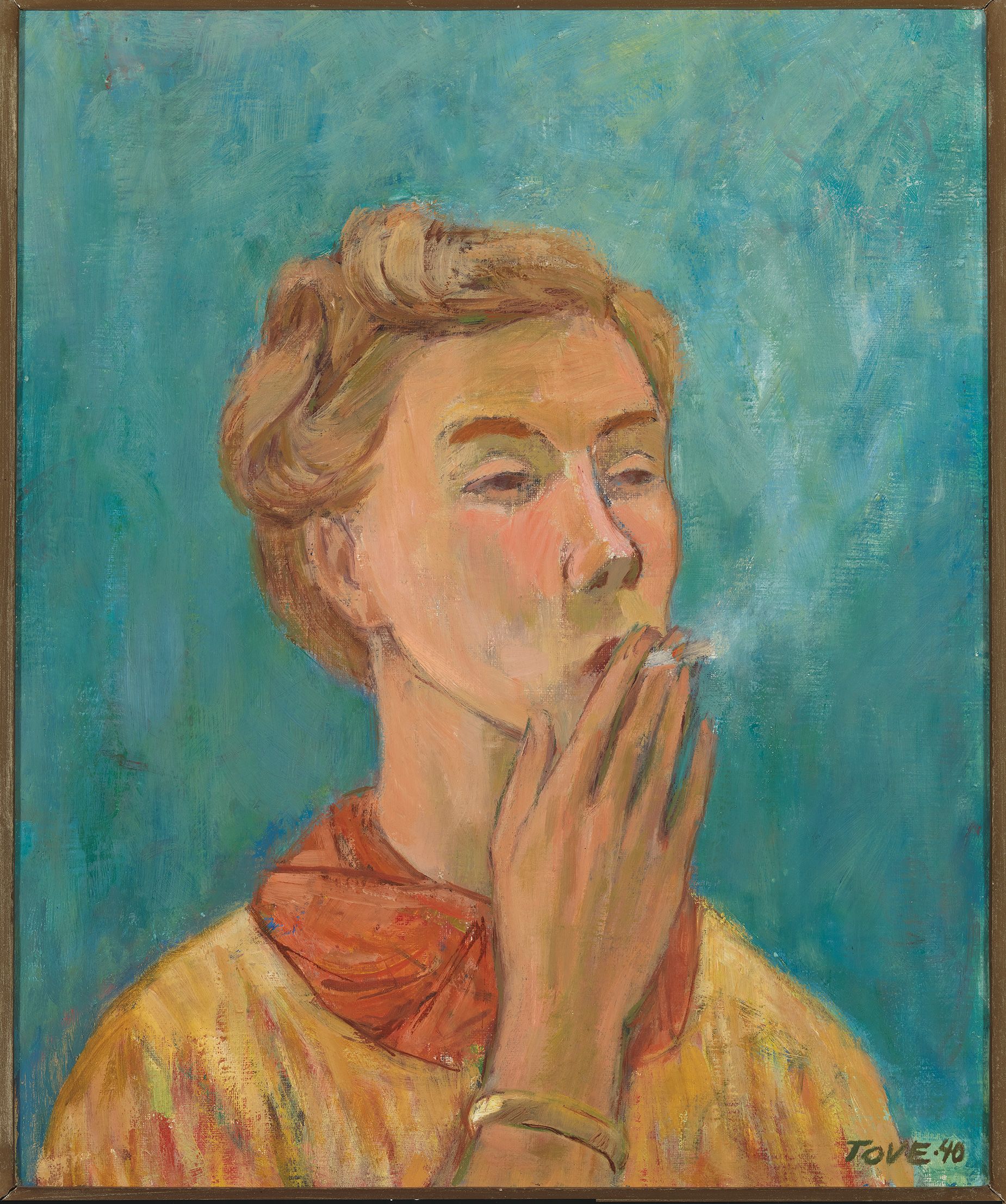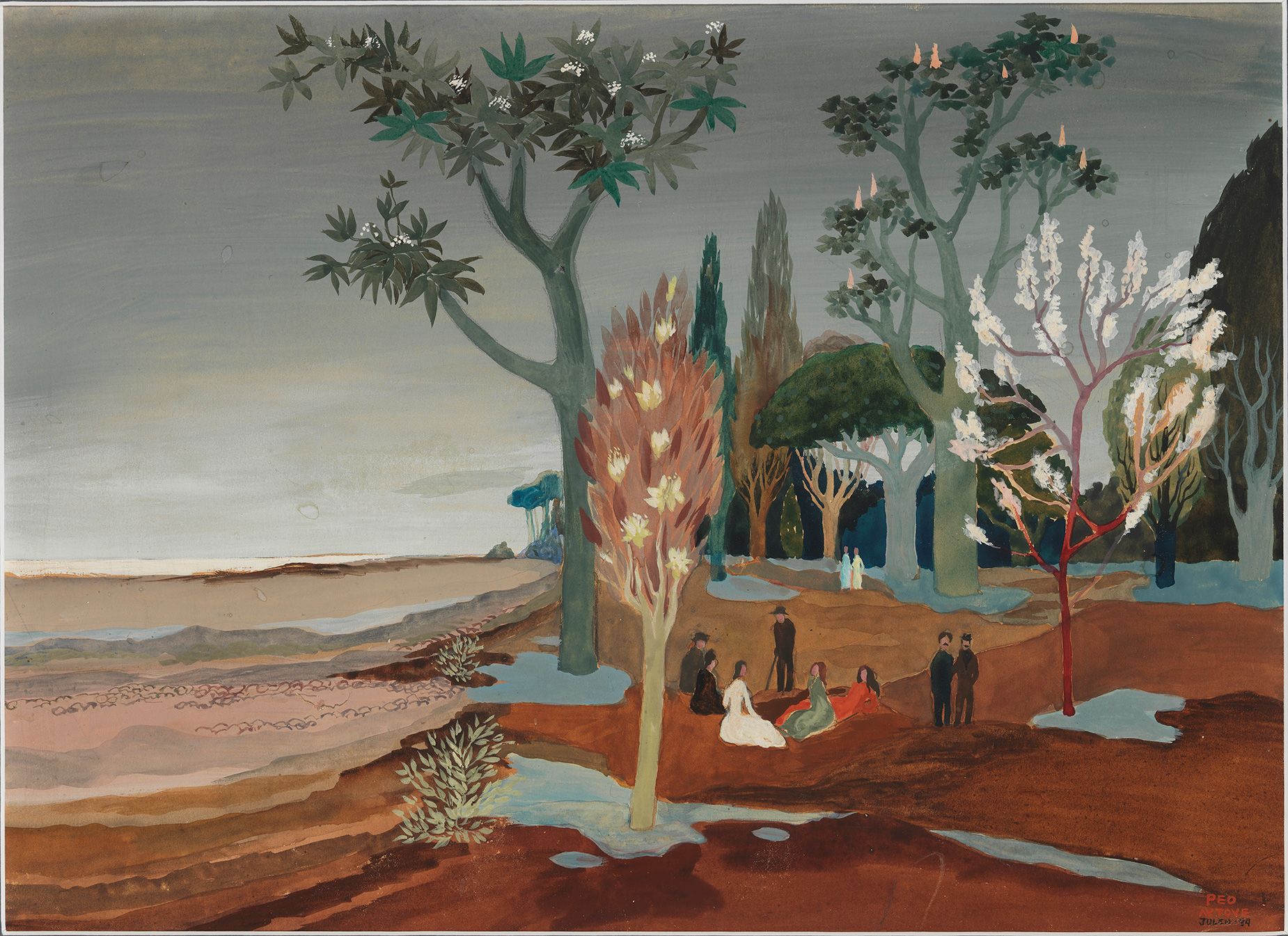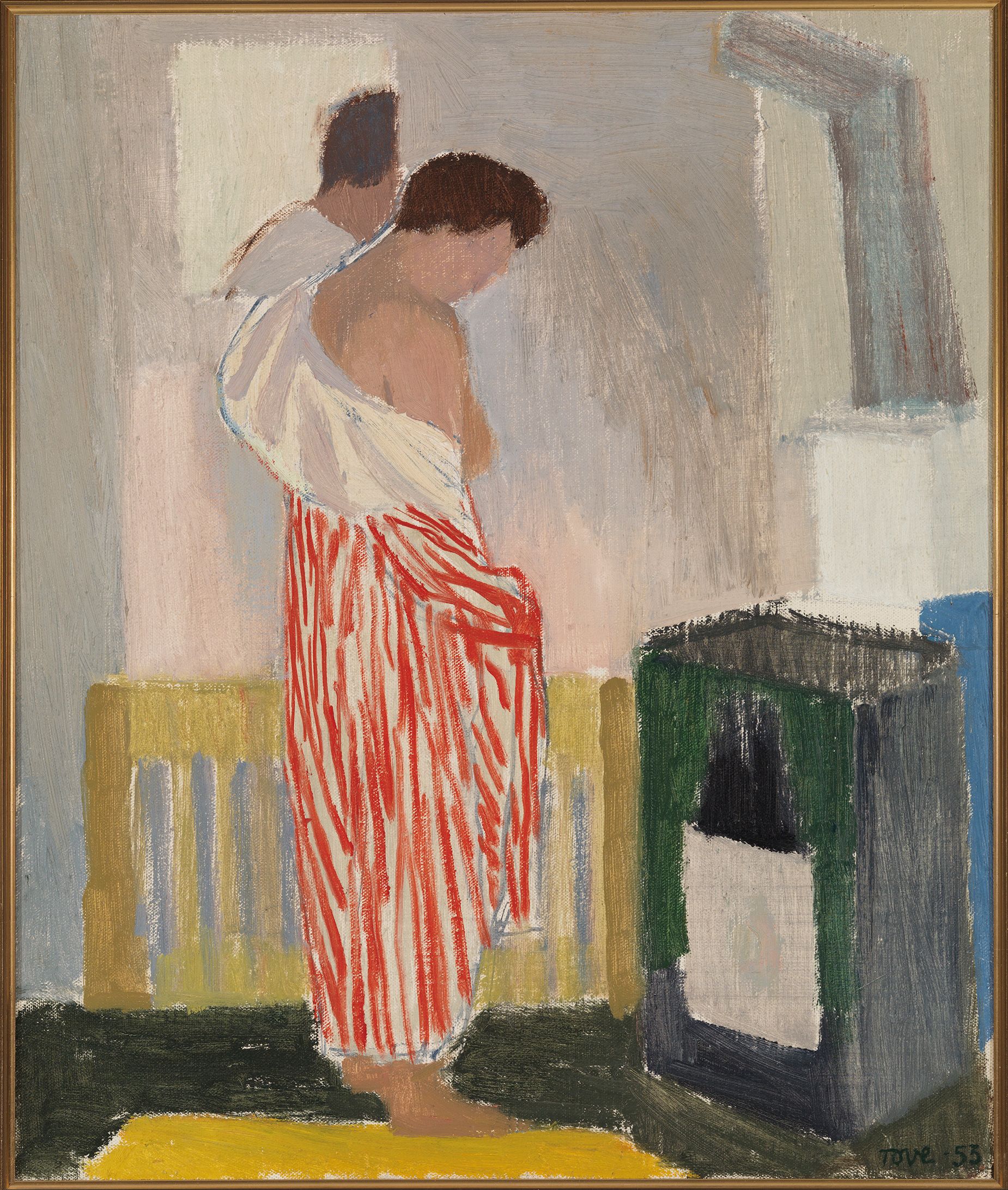The Moomin characters may be internationally famous, but a new exhibition in Paris shows a lesser-known side to the Finnish artist who created them.
The show takes an intimate look into the life of Tove Jansson, both as a prolific artist and an advocate for female independence. Previously unseen ephemera highlights “the complexities of someone who created her own rules as a female and queer artist,” said the show’s curators Sini Rinne-Kanto and Tuukka Laurila, “operating in a male-dominated universe in the years before and after World War II.”

Using illustrations, cartoons, photography, music, writings and letters, the exhibition shows Jansson as a multifaceted character who could — and did — make art out of almost anything.
An outspoken and visionary female artist
“From an early age, she knew she wanted to be an artist, there was something unwavering about it,” said Thomas Zambra, one of Jansson’s grandnephews in an interview with CNN.
Art was a path Jansson followed from the start, supported by her artist parents — her mother, Signe Hammarsten was a famous Finnish illustrator and her father, Viktor Jansson, an illustrious sculptor.
Tove Jansson’s first chance to make a name for herself came aged just 15 when her mother was called away to Stockholm and arranged for her daughter to take over a commission for the cover of a children’s magazine. It was the start of her recognized artistic life.

A year later, Jansson started studying art in Stockholm and in 1938 aged 24, she moved to Paris to pursue her studies at the prominent École des Beaux Arts. Nature was one of Jansson’s recurring motifs — both in her paintings and writing — particularly the sea and the islands and coasts of Scandinavia. Summers spent in the Stockholm archipelago were an huge influence (the Jansson family was part of a Swedish-speaking minority in Finland) and the young Jansson dreamed of an island of her own.
But the Second World War proved a difficult time for Jansson, a time that is sometimes referred to as the “lost years” of her life. A humanist and pacifist, Jansson’s paintings of the time took on a gray palette while her two brothers went to fight in the war, evidenced in the exhibition by a somber oil painting of her family featuring her brother in a military uniform. Then working for the satirical political magazine “Garm”, Jansson did not hesitate to openly criticize enemy powers and political leaders including Hitler and Stalin.
Although dark in many ways, the period was also a turning point in Tove Jansson’s career. In 1941, she was nominated as one of the most humorous Nordic caricaturists. It was in “Garm”, too, that she debuted the first sketches of her Moomin-like characters.

A life of one’s own
In 1942, Jansson left her family home for her own studio in Helsinki, The studio was decrepit after bombings from the war but it became one of the most important spaces for her work as a freelance illustrator and artist.
The exhibition showcases many of the illustrations she drew there including works drawn for J.R.R Tolkien’s “The Hobbit” and Lewis Carroll’s “Alice in Wonderland”.
Two years later, she found a new studio in the heart of the city, where she lived and worked until she passed away in 2001 aged 86. A crucial creative space for Jansson, it was from here that she worked on her first Moomin fairytales book — published in 1945 — a project which provided Jansson the escape from reality she was looking for.
It was followed by 12 more Moomin books over the next 20 years, telling stories of tolerance and love — universal values that set Jansson up to become an internationally-known author. Both small original pencil sketches and later Moomin drawings form part of the new exhibition.
By the end of World War II, Jansson’s career and personal life had shown her to be a modern and visionary woman. Her choices constantly challenged expectations set on women at the time — namely that they should stay in the home and take care of children.

She opposed the war and never married because she didn’t want to have her children go through the same thing or a son to be forced to fight in the “inevitable wars of men.” Rejecting gender binaries, Jansson was career-focused and a queer woman living her queerness openly, despite it being illegal at the time.
Her life partner, Tuulikki Pietilä, lived in the same apartment block and visited directly using an attic passage. Together in 1964, they also fulfilled Jansson’s dream of buying an uninhabited island in the Finnish Pellinge archipelago where the pair spent nearly 30 summers making art, which also features in the exhibition.
In an interview with CNN, Tuukka Laurila, founder of the Paris-based art institution “The Community” who curated the exhibition, recalled listening to an audio tape of Jansson and Pietilä, dancing in their house on the island, “an amazing moment of them just living their lives,” he told CNN. The pair notably recorded their travels, music they liked and the sounds of the islands to make mixtapes, some which are featured in the exhibition.
“Every little thing she did was touched with an artistic standpoint, not just painting, everything that she did, she did properly, and with effort,” recalled Zambra.
“It gives me goosebumps,” said Laurila, “working on someone who was such a talented genius, whose work is timeless and still inspires artists today.”
“Houses of Tove Jansson” is located at Espace Mont-Louis in the 11th arrondissement of Paris. It is free but requires registration.
The Link LonkOctober 18, 2023 at 05:59PM
https://news.google.com/rss/articles/CBMiTmh0dHBzOi8vd3d3LmNubi5jb20vc3R5bGUvbW9vbWlucy10b3ZlLWphbnNzb24tbmV3LWV4aGliaXRpb24tcGFyaXMvaW5kZXguaHRtbNIBAA?oc=5
Little-known life of Moomins creator Tove Jansson explored in new exhibition - CNN
https://news.google.com/search?q=little&hl=en-US&gl=US&ceid=US:en

No comments:
Post a Comment